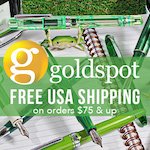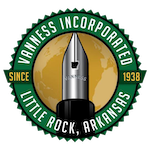(Jeff Abbott is a regular contributor at The Pen Addict. You can find more from Jeff online at Draft Evolution and Twitter.)
When Brad sent me the Cult Pens Mini fountain pen to review, the first thing I noticed was the BB nib. I'm kind of disappointed to say it's my first time writing with this size nib, but I'm glad I had the chance. It's not nearly as wide as I thought it would be, but it's so, so smooth.
Anyway, we'll get to the nib a bit later. Like I said, Brad sent me this pen to review and I was pretty excited to put it to use. So, who makes this stylish black pen? Cult Pens designed it, but it uses Kaweco nibs. In my opinion, a great combination. 29 pounds (about $47) is a fairly good price for a metal pen with a nice Kaweco nib. So, how does it stand up against other mini pens? Not bad, but it might not be for everyone.
First off, this pen really is mini. It's nearly the same exact length as a Kaweco Sport, but much slimmer. The black body and silver metal accents give it a classy, elegant look, and the small size makes it even more interesting to the eye. When you pick it up, it has a nice weight to it without being hefty. You can tell it's made of metal, but it's still lightweight and solid. The one thing that put me off initially about the look of the pen is the Cult Pens logo on the top of the cap opposite the clip. It's a bit large and the spacing between the letters seems cramped. Also, the typeface could be more elegant. It doesn't seem to match the overall style of the pen. But, those are minor niggles.
The cap screws onto the pen, and the threads feel good. No squeaking or harshness in the turns. Like most Kawecos, I can't use it without posting the cap. The cap posts solidly on the bottom of the pen, and it turns it into a decent length for writing.
Everything is good for me so far, but then it takes a major hit when it comes to the grip. Personally, I love metal grips. This is a metal grip, but it's just too thin for me. I can't get a comfortable grip on the pen because my fingers are too close together when writing. Also, I'm not a huge fan of the scoring in the grip – four rings around the grip that don't seem to help my grip problem.
This is usually a problem for mini pens – when creating a small pen, there will always be trade-offs. This won't be the pen I use to write a 5,000 word essay in class, but it is a great pen for everyday carry and jotting down quick notes. And, if you like small grips, this might be perfect for you. There's nothing wrong with the grip, it just doesn't fit my hand and writing style.
Moving on from the grip, the section unscrews from the body to reveal a nice interior. Again, this pen does not feel cheap at all. Everything is made of high-quality metal and machined precisely. Of course, it takes the same cartridges as any Kaweco, plus any international shorts or short converters.
The clip is strong, which is important for a mini pen that will likely be put in bags, pockets, purses, and so on. If you clip this pen to something, it's not coming off by accident.
Now, to the writing experience. I'm so pleased to say that this is the first Kaweco I've used that was fantastic out of the box. Being a BB nib, it's a smooth, wet line that is probably 1mm at its thickest point. Writing with this nib is a pleasure. It's a bit thick for thin-ruled notebooks, but it's so smooth that it makes up for this small problem. I've really enjoyed this nib, and I'm almost convinced that I should try out some more Kawecos – but not quite yet.
What I am definitely convinced of is that I need to get out of my rut of nib choices. I generally always go for a fine nib, which is good most of the time, but also pretty boring when every pen I own is the same tip size. Trying out the BB nib was a great experience, and I need to branch out more into medium (of which I own a few) and also purchase my first B nib. Ya know, for comparison's sake.
I wish I had a Kaweco Lilliput to compare this pen to, but I don't. I can only assume it's very similar. But, the design of the Cult Pens pen is much different, which will appeal to a different set of customers and writers. If you're into mini pens, this is a great place to start. This is a well-built pen that won't let you down.
(CultPens provided this product at no charge to The Pen Addict for review purposes.)









